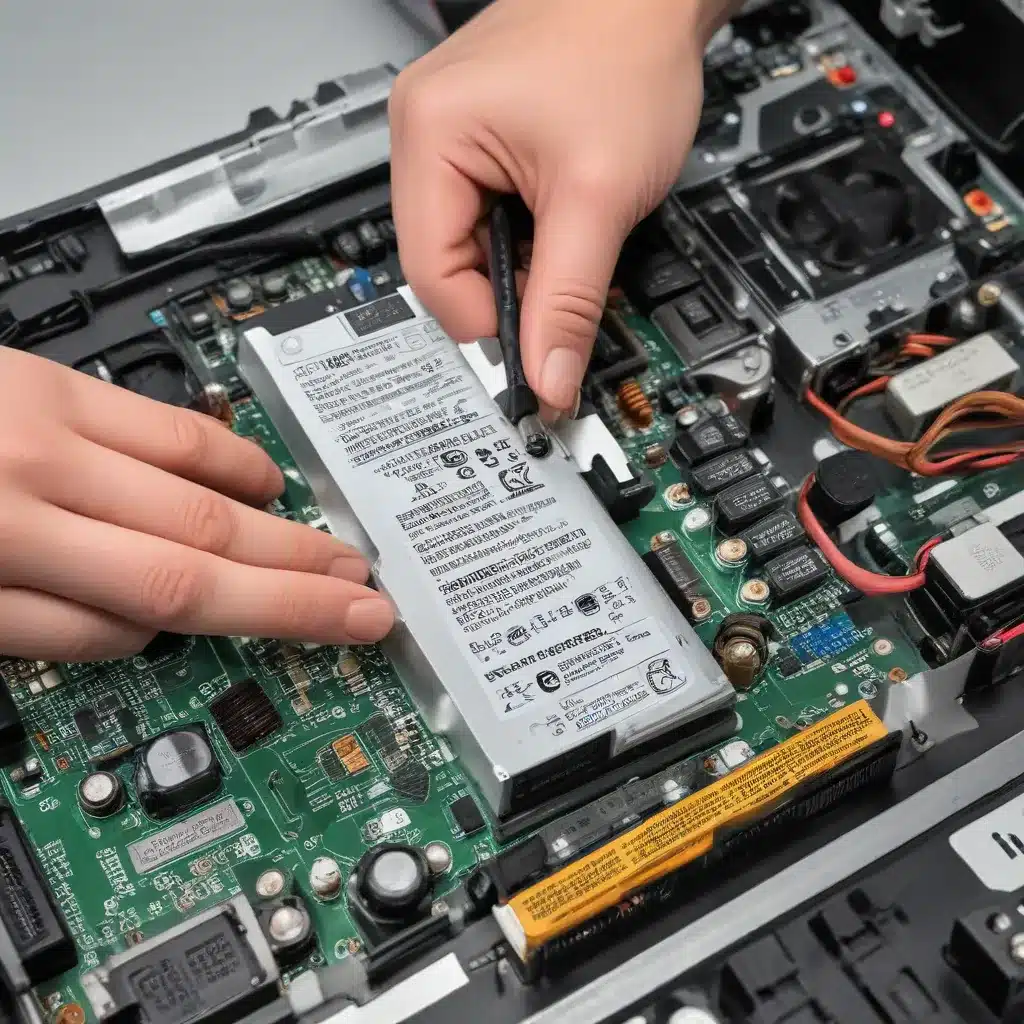
As a seasoned IT professional, I’ve encountered numerous cases of laptops experiencing issues due to faulty power supplies. Whether it’s sudden shutdowns, battery charging problems, or erratic behavior, a malfunctioning power supply can be the root cause of many laptop woes. In this comprehensive article, I’ll guide you through the process of diagnosing and replacing a faulty laptop power supply, providing practical tips and in-depth insights to help you resolve this common yet frustrating problem.
Identifying Power Supply Issues
The first step in addressing a potential power supply problem is to recognize the symptoms. Some common signs of a faulty power supply include:
- Sudden Shutdowns or Freezes: If your laptop randomly shuts down or freezes, especially under heavy load or when running resource-intensive applications, this could indicate a power supply issue.
- Battery Charging Problems: If your laptop’s battery is not charging properly or the battery life is significantly reduced, the power supply may be the culprit.
- Flickering or Inconsistent Display: A malfunctioning power supply can cause the laptop’s display to flicker, dim, or exhibit other visual irregularities.
- Overheating or Thermal Throttling: A power supply that is unable to provide the necessary power can lead to the laptop’s components overheating, causing thermal throttling and performance degradation.
If you’re experiencing any of these issues, it’s crucial to investigate further and diagnose the root cause.
Troubleshooting Power Supply Problems
To determine if your laptop’s power supply is the source of the problem, you can follow these troubleshooting steps:
1. Check the Power Adapter
Inspect the power adapter for any visible signs of damage, such as frayed cables, cracks, or a loose connection. Try using the adapter with a different laptop or device to see if it’s still functioning correctly.
2. Inspect the Laptop’s Power Port
Examine the laptop’s power port for any signs of wear, damage, or debris buildup. If the port appears damaged or the power connector doesn’t fit snugly, this could be the source of the issue.
3. Test with a Known Good Power Supply
If possible, try using a “known good” power supply that you’ve verified to be working properly. This can help you isolate the problem and determine whether the issue lies with the laptop’s power supply or another component.
4. Monitor Power Consumption
Use a power monitoring tool or software to check the laptop’s power consumption under various load conditions. If the power draw exceeds the rated capacity of the power supply, it could be the cause of the problems you’re experiencing.
5. Perform a Load Test
Run a benchmarking or stress-testing application to put the laptop under heavy load. If the system crashes or exhibits instability during the test, it’s a strong indication of a power supply issue.
By following these troubleshooting steps, you’ll be able to identify whether the power supply is the root cause of your laptop’s problems or if the issue lies elsewhere.
Replacing a Faulty Power Supply
Once you’ve determined that the power supply is the culprit, it’s time to replace it. Here’s how you can approach the process:
Compatibility Considerations
Before purchasing a replacement power supply, ensure that it’s compatible with your specific laptop model. Check the manufacturer’s specifications for the required voltage, amperage, and connector type. Using an incompatible power supply can potentially damage your laptop’s components.
Sourcing a Replacement
You can purchase a replacement power supply directly from the laptop manufacturer or from a reputable third-party supplier. Be cautious of cheap, generic alternatives, as they may not meet the quality and safety standards of the original power supply.
Proper Installation
Follow the manufacturer’s instructions carefully when replacing the power supply. Ensure that the new power supply is firmly connected to the laptop’s power port and that all cables are routed correctly to avoid any potential interference or damage.
Power Supply Testing
After installing the replacement power supply, thoroughly test your laptop to ensure that the power-related issues have been resolved. Monitor the laptop’s performance under various load conditions and verify that the battery is charging properly.
Disposal of the Old Power Supply
If the old power supply is beyond repair, dispose of it responsibly, adhering to local regulations and environmental guidelines. Many municipalities and electronics retailers offer recycling programs for old power supplies and other electronic waste.
By following these steps, you can effectively diagnose and replace a faulty laptop power supply, restoring your device’s reliability and performance.
Preventing Future Power Supply Issues
To minimize the risk of power supply-related problems in the future, consider these proactive measures:
- Proper Power Management: Ensure that your laptop’s power management settings are optimized to prevent excessive power draw and strain on the power supply.
- Regular Cleaning and Maintenance: Periodically clean the laptop’s power port and the power adapter’s connector to maintain a secure and reliable connection.
- Protecting Against Surges: Use a high-quality surge protector or uninterruptible power supply (UPS) to safeguard your laptop from power fluctuations and sudden spikes.
- Replacing Worn Power Supplies: If your laptop’s power supply is showing signs of wear, such as fraying cables or a loose connection, consider replacing it proactively to avoid potential failures.
By following these preventive steps, you can extend the lifespan of your laptop’s power supply and minimize the risk of future issues.
Remember, as an IT professional, your role is not just to fix problems but also to educate and empower your clients or users. By providing practical tips and in-depth insights on diagnosing and replacing faulty laptop power supplies, you can help them maintain the health and longevity of their devices, ultimately enhancing their overall computing experience.
For more information on IT solutions, computer repair, and technology trends, be sure to visit https://itfix.org.uk/, where our team of experts is dedicated to delivering valuable insights and reliable support.












